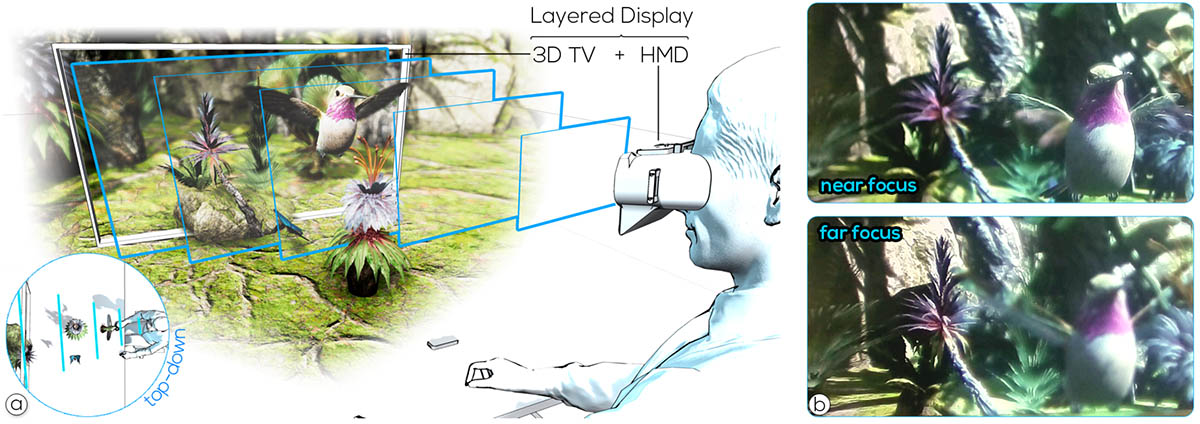Off-Axis Layered Displays

Overview of the concept of off-axis layered displays. (a) Off-axis layered displays combine a direct-view display, such as a desktop monitor, projector, or handheld display, with a near-eye display, to provide focus cues. Input to off-axis layered displays is a focal stack of the 3D scene. The focal stack is illustrated between the user and the direct-view display. (b) Photographs captured through the HMD for demonstrating the capability of the display to provide in-focus contrast at different focus distances.
Abstract: This work introduces off-axis layered displays, the first approach to stereoscopic direct-view displays with support for focus cues. Off-axis layered displays combine a head-mounted display with a traditional direct-view display for encoding a focal stack and thus, for providing focus cues. To explore the novel display architecture, we present a complete processing pipeline for the real-time computation and post-render warping of off-axis display patterns. In addition, we build two prototypes using a head-mounted display in combination with a stereoscopic direct-view display, and a more widely available monoscopic direct-view display. In addition we show how extending off-axis layered displays with an attenuation layer and with eye-tracking can improve image quality. We thoroughly analyze each component in a technical evaluation and present examples captured through our prototypes.
Acknowledgements: Tobias Langlotz is supported by the Marsden Fund Council from Government funding (grant no. MFP-UOO2124)
